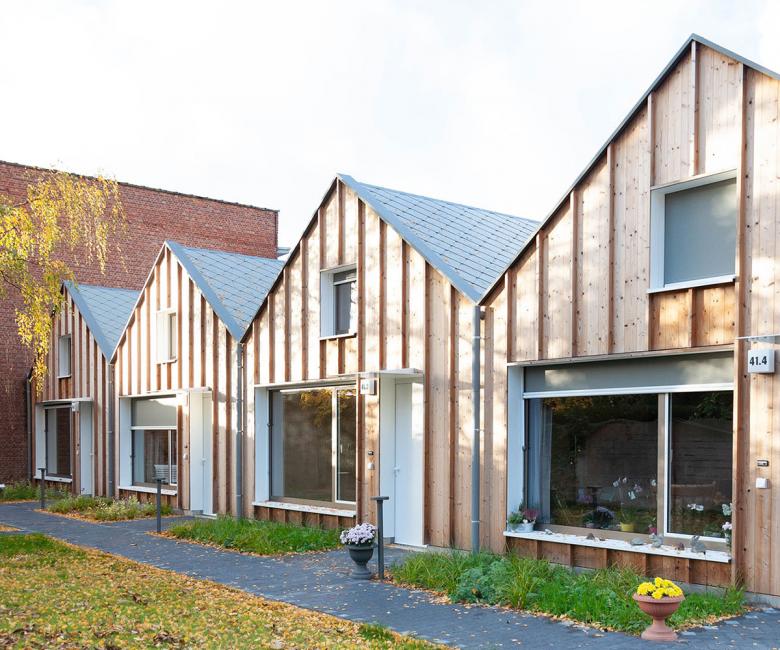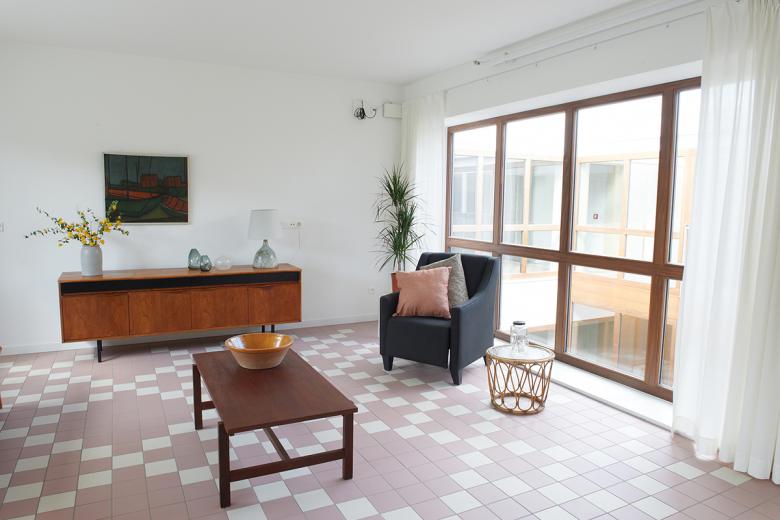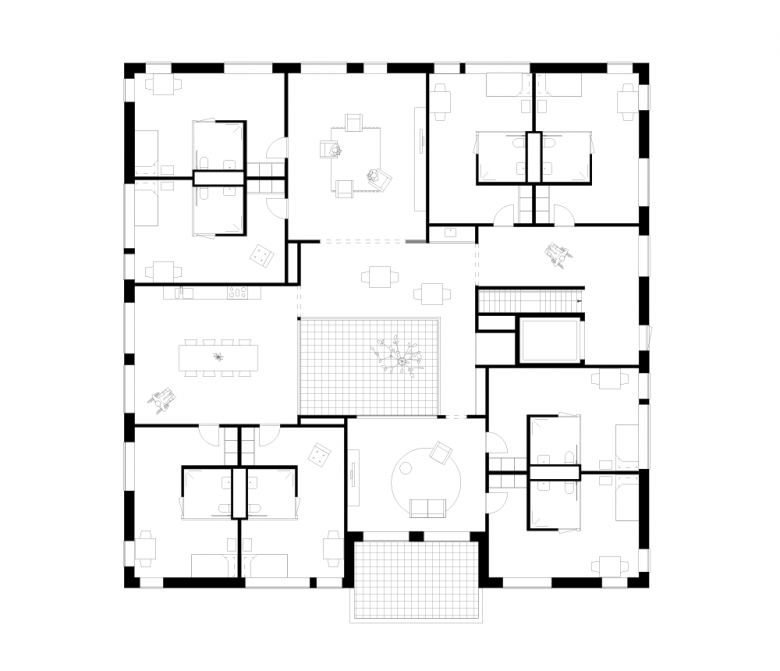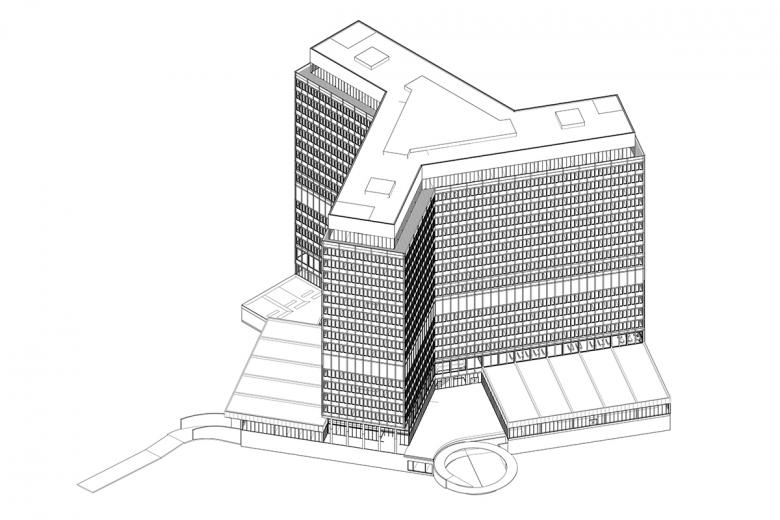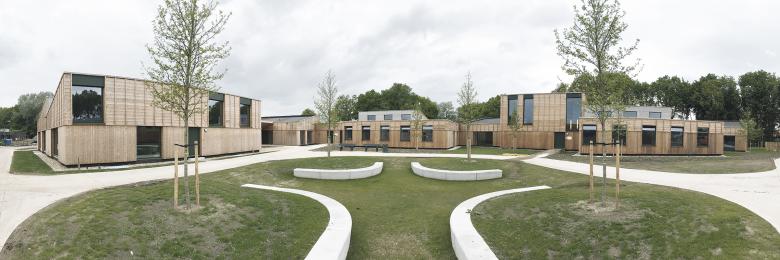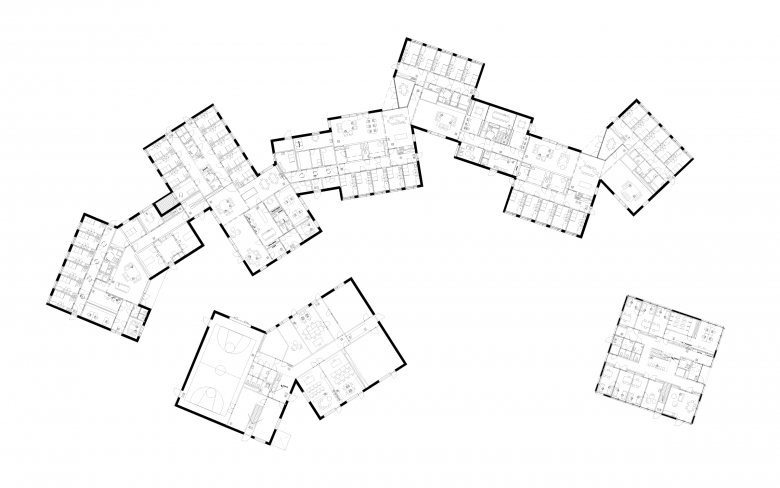Designing Well-Being at Osar Architects
John Hill
19. May 2020
Astor VZW in Wijnegem (Photo courtesy of Osar Architects)
Belgium's Osar Architects is a leader in designing healing communities in healthcare and related sectors. World-Architects spoke recently with Osar Architects about their projects, Building Information Modeling, BIM "translators," and how Osar uses Vectorworks in their office.
Osar Architects is a 40-person firm with offices in Antwerp and Ghent. Since its founding in 1974, Osar has developed expertise in the healthcare sector, particularly in the design of hospitals and collective housing for the elderly. The firm also designs social housing, psychiatric facilities, educational and administrative buildings, with most of the projects awarded through public contracts. Uniting the projects is the pursuit of well-being for the residents and other end users.
We spoke recently via Zoom with Enrique Aucha Gómez, who has worked at Osar for nearly eight years and told me he is in charge of "the implementation of the BIM methodology throughout various projects in the firm." Our conversation touched upon the projects the firm is working on and how the firm is handling remote-working, while focusing on how the firm handles BIM requirements on its projects. Osar is in the midst of training a core team of employees so they have an advanced level of BIM proficiency, but my interview revealed how the firm deals with consultants who translate their models for construction, which is increasingly common in Belgium. An edited transcript of our conversation follows.
WZC Menos Genk, housing for the elderly with eight homes organized around a communal outdoor area (Photo courtesy of Osar Architects)
How do you view Osar's elderly housing projects in the situation we’re in now with Coronavirus?It’s interesting that you ask because now, in recent weeks during the global coronavirus pandemic, the media has been talking about our projects, using them as good practices. The vision of Osar is to design for small groups of people — between 8 and 12 people per group. That means eight people sharing a common kitchen, a common living room, but not much more. We feel this is the way to bring quality to the projects. The person who will come and live in such a place has the feeling they are moving to a new house more than moving to a hospital. We try to take that hospital feeling out of our projects. We want people to feel like they are at home. These articles explain how this model of dividing into small groups makes the virus easier to control.
Of course we have to learn from this situation. A lot of questions have arisen during the pandemic. We have built up our vision for at least ten years, and now it also is being tested in this extreme situation. At Osar, we strongly believe in this concept; for us it is the future of health care.
WZC Menos Genk, floor plan (Drawing courtesy of Osar Architects)
I can see you are working remotely, like most architects. Is there any dramatic difference between working on BIM at home versus at the office.Actually not. We were very fast adapting to this situation. One of the projects I am working on has nine people involved in drawing and designing. We all work together in the same project file. At the beginning we were operating on one server and if everybody was editing at once the server slowed down significantly. In the end we got to an efficient internal workflow. In this case our BIM-consultant works in a separate BIM project file. If we would be co-editing with an external party, I am sure the way to work around that would be sharing via IFC.
Our preference is to do it from the beginning. We are trying now to set our goals in using BIM: 3D coordination, technical clashes, plan coordination. Me personally, when I start designing, I start in 3D. With Vectorworks it is easy since you’re working in 2D but it’s a 3D element. That’s not the same for everybody in our office; not everybody has the same experience in 3D modeling or 3D drawing so every project is set up differently. I made an analysis in our office to check how many people are able to execute by themselves a whole project in 3D. Only 20% of them are currently able to do that. Our strategy is to gradually invest in building more 3D proficiency throughout the office, always linked to new project opportunities. That’s what we’re doing now actually.
Yes we do. Last fall, based on the analysis I made in the office and the projects we were working on at the time, eight people in our firm went to one of the two-day training sessions hosted by Vectorworks.
AZ Turnhout hosptial (Drawing courtesy of Osar Architects)
With a lot of public work, is Big BIM a mandate from the government?In some projects they are required, in others not. I think in the last months they’re really starting to ask for it as part of public contracts. Only last week I got a message from a colleague asking if we meet the requirements of a competition tender asking for advanced BIM expertise. More and more it is not a nice-to-have, but a must-have. In the future it will be obligatory to work in BIM. There’s no other way to go further.
Right now we are testing the best way to implement BIM completely in our office. For example, with one project— a 5,000-square-meter psychiatric hospital with 80 rooms — both the client and the contractor asked for a BIM protocol, including a 3D model. We rendered the project completely in 3D, but then there was an external party between us and the contractor that turned our model into one that would meet the demands of the contractor. So we have a consultant in between, following our design process but developing a 3D model according to the needs of the contractor.
After completing a BIM-management course and studying best practices on how to implement the BIM-methodology within an architecture office, I came to the conclusion that it is very difficult for an architect to create a 3D model exactly the way a contractor wants it. Their expectations are totally different. I don’t think it is our task as architects to be BIM modelers for the contractor. This in-between position — an external office, an external modeler — is very important. Here in Belgium it proves to be quite useful, a lot of people use this kind of BIM-consultancy to "translate" projects for the contractor.
OPZ Geel K-Dienst, a psychiatric institution for children and adolescents in Geel, Belgium. (Photo courtesy of Osar Architects)
So you’ve encountered these BIM "translators" on other projects, not just this psychiatric hospital?In different projects and in different phases. But in the case of the psychiatric hospital, we agreed to have a definitive 3D model available before we started to build, so if any doubt or problem comes up this model is available to check everything. It has the detail the contractor wants and it is made by an external BIM-modeler. Any change during construction would be updated into the model by the modeler. At the end we have an as-built model and plan without having to develop all the plans again. What changed here, what changed there — every adjustment in construction in displayed in that 3D model. It’s very efficient.
I believe it is not a primary task of an architect to deliver such a 3D model. We're designers, we're technicians, but we don’t have to be experts in modeling. At least that's my way of thinking. I see BIM as a way of working, which architects have to take advantage of — financially and as a way of working in team more efficiently. But if I'm going to invest a lot of time and money in producing a 3D model to make the job of a contractor easier, what is the advantage for us? I think we have to find that place in between. We stop here with our 3D model and there, in between, is where an external party comes in, for making that translation between two worlds, you could say.
OPZ Geel K-Dienst, floor plan (Drawing courtesy of Osar Architects)
This reminds me of many years ago, in the days before BIM, of sending a 3D model to a rendering company; they completely rebuilt our model so it rendered better for them.For example, the way the connection between a concrete floor and a wall is built in a 3D model by an architect, is completely different from how it’s going to be made on the construction site. The 3D model the contractor will have to deliver to the fabricator is made according to their demands. We cannot do that. We cannot build our model based on that. I think a lot of architects think that way as well.
Some of the offices specialized in the process of creating a BIM model for execution shared their experiences during courses I attended. For them it is very inefficient to use the 3D-model they get from the architect even though in some cases this 3D model is quite advanced. For them it's best and most efficient to completely redo it again: with their own families, elements, naming, … Even at that level it’s still very difficult to have a continuous line of work; there’s always this break in between.
Every project is different. In one of the projects I am involved with now we are working together with a Spanish BIM consultant starting from the design process. We are constantly in contact to communicate our design that will be developed in 3D by them according to our way of working, our graphic representation. That’s one way of working. For other projects we do the 3D models ourselves. Depending on the needs of each project and the capacity we would have at the moment in our office, we always consider if we work with someone external or we develop the BIM model ourselves.
World-Architects is an Exclusive Media Partner for the fifth Vectorworks Design Summit, which was scheduled to take place April 22-24, 2020, in San Diego, California, but was canceled due to the coronavirus (COVID-19) pandemic.
Related articles
-
Designing Well-Being at Osar Architects
on 5/19/20
